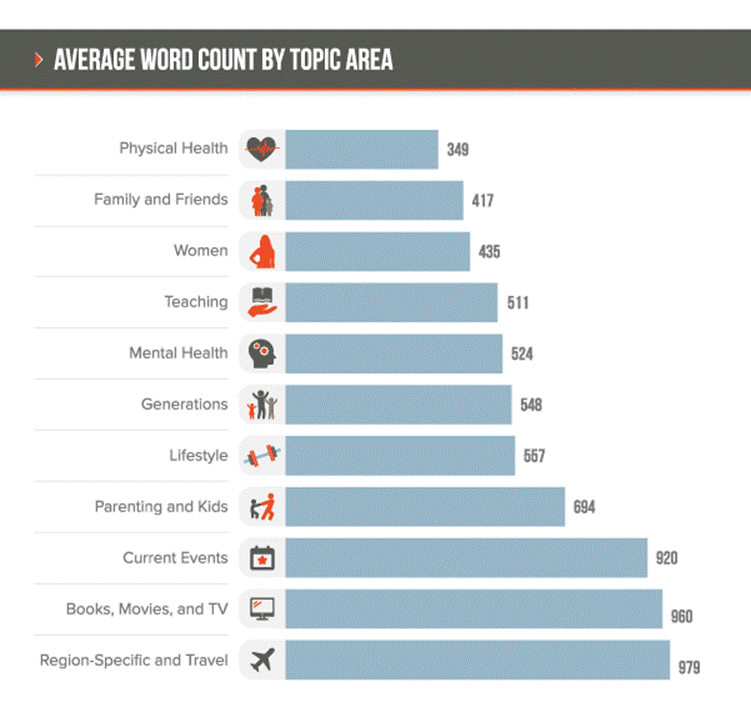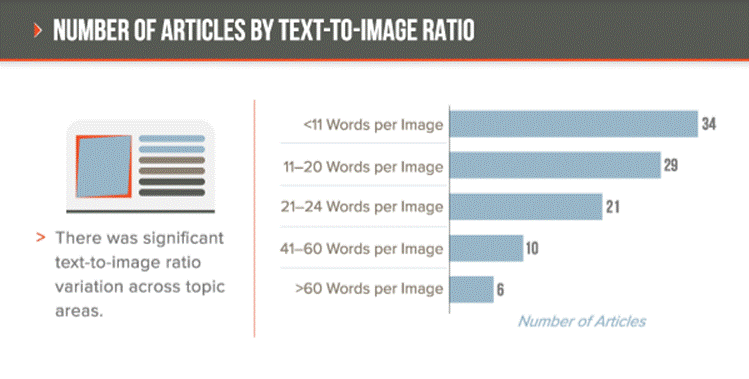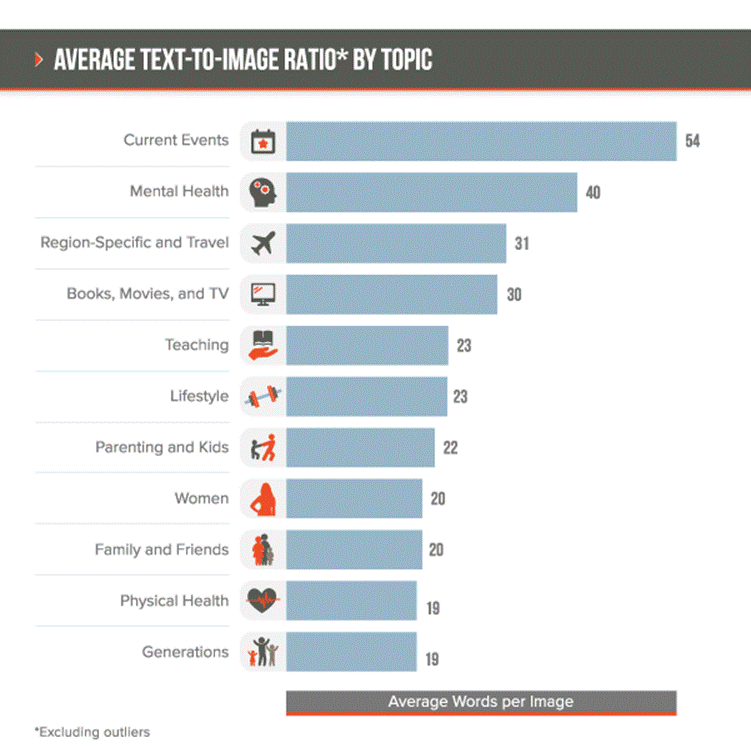
As one of the internet’s most popular publishers, there’s a good chance you’ve read an article or taken a quiz on BuzzFeed. The digital publisher has made a name for itself with it’s quick wit and playful content – it boasts more than 200 million monthly unique visitors and publishes on more than 30 social platforms across the globe – but it’s also quickly developing a reputation as a hard news source.
So what’s their secret? My team at Fractl used BuzzSumo to analyze the top 100 most-shared posts on BuzzFeed over a one-year period in our search for answers. After analyzing the word count and number of images included in each post across 11 different verticals, we discovered that some long-held assumptions of viral content simply aren’t true anymore.
Myth #1: Steer Clear Of Long-form Content
Our data set averaged 423 words per article, and a closer look revealed that this was a result of nearly 75 percent of the posts being lists. So in a way, this myth wasn’t entirely busted. However, more often than not, these posts included a bunch of memes or GIFs that focused purely on entertainment value like this post on siblings.
With a little more digging, though, we noticed that more than 25 percent of the most popular content exceeded 600 words – and some of these posts even landed between 2,000 and 5,000 words! So yes, although BuzzFeed is known for its popular listicles, it still relies quite a bit on long-form content – but success depends significantly on your vertical.
For instance, viral posts that focused on physical health, family, and women averaged less than 500 words. In comparison, posts that fall under the umbrella of current events, entertainment, and travel averaged more than 900 words.

A great example is this post on travel accessories. Although it’s delivered in the popular listicle format, it’s more than 1,000 words long and offers readers additional information on the products they’re reviewing. The result? More than 42,000 shares and 1.2 million views.
Myth #2: Overload A Post With Images
BuzzFeed is also known for including plenty of GIFs and images with its content, but when we took a closer look at the text-to-image ratio, we discovered that more than a third of posts exceeded 21 words or more per image – and 16 of these posts exceeded 40 words per image.

For instance, this post offering a behind-the-scenes look at a couple traveling the world averages 73 words per image. The high word count works because it reveals something the pictures simply can’t show: When they aren’t doing yoga on a beach in Greece, they are scrubbing toilets for cash in order to keep their trip afloat. The post was a hit, earning nearly 70,000 shares and more than 2 million views.
Myth #3: What Works For One Topic Will Work For Every Topic
The biggest takeaway from our research? There is no one-size-fits-all formula for viral content, particularly when it comes to different verticals – some audiences appreciate a few extra paragraphs while others want something more snackable.
Consider the stark difference between posts on mental health and family and friends. Mental health posts’ text-to-image ratio is double that of family and friends and yet they can still earn a comparable amount of shares.

Take a look at this post that offers ways to become happier in the new year. It includes 57 words per image. Now compare that to this post highlighting a family’s awkward Christmas cards that averages 24 words per image. Each post earned more than 40,000 shares and roughly 1 million views, proving that readers for the first post would rather learn something while the latter simply wants to be entertained.
So What Do People Want To See?
The most important thing to remember is that your audience expects high-quality content tailored to their interests.
Although you should keep in mind the optimal text-to-image ratio for each vertical, remember that the best content tells a story.
Understanding what type of content will resonate with your audience and how to present it will help you hit high social metrics, so be sure to create engaging content that will entice readers to share within their own community. This will facilitate a more organic reach of your message – an invaluable asset to any brand.
Hand-Picked Related Articles:
- 7 Tips For Growth Hacking Traffic Monster Headlines
- 9 Tips For Finding Killer Blog Topics
- How To Write So It Matters
* Adapted lead image: ![]() Public Domain, pixabay.com via getstencil.com
Public Domain, pixabay.com via getstencil.com
